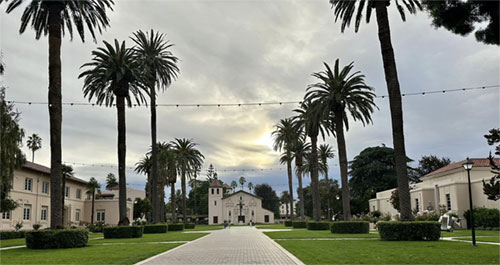The Spanish Missions in California – Ungodly Acts in the Name of Religion
The Spanish Missions in California – Ungodly Acts in the Name of Religion October 2023

Historians often say that more wars have been fought in the name of religion and more people killed and persecuted because of it than for any other reason in the annals of human history. While religious wars are not part of mainstream California history, the persecution of people in the name of religion did happen. The motives may to an extent have been altruistic, but the results of what happened are far from Godly.
The Spanish in California
The Spanish presence in the “New World” was threatened by the rapid expansion of the English-speaking Anglo-Saxon colonists in the 18th century. The colonists, who initially settled on the East Coast of America soon found that the untold riches of the unexplored and unsettled rest of the continent had a huge appeal. The expansion was unexpectedly rapid and the Spanish, who had expanded into what is now California from Mexico, were concerned about this rapid westward expansion by another strong European influence. The solution? Bringing the natives into the Spanish fold by partially assimilating them. The key word here is “partially”. Full assimilation would mean giving the Natives a status equal to that of the Whiteman, (Gente de razón – People of reason) which was unacceptable to the Spanish power brokers.
Racial Superiority Was Taken as a Given
Similar to the settlers on the East Coast, the Spanish Empire in the West considered themselves to be superior to the Natives. Their society was more advanced, their history more impressive, their material wealth greater, their military power stronger and, perhaps most importantly, their religion was the only true one. Anything else was heathen superstition and equivalent to devil worshipping. This “superiority” was used to justify the subjugation of the native peoples, acquire more of their land and wealth and force them to convert to Christianity. This would put indigenous people firmly under the control of the Spanish and create a powerful bulwark that would be able to stand up to the expansion from the East and other encroaching European colonial powers. But besides the almost universal racial prejudices of the time, allowing the Natives to be equal to the elitist Whiteman would be to place their God-given-right of superiority at risk. That could not be allowed.
The Missions Were the Solution
The missionaries of the Franciscan Order were the pioneers in mission creation. They aimed to create self-sustaining Christian communities across those regions under Spanish domination. The Spanish authorities, while supporting the missionaries, had another agenda which was to create a population that would be strong enough to resist the expansion from the East and North (Russians) while also being passive enough to be controlled by the new order.
The story of the conflict is well-known and there is no point repeating it. What is often forgotten is the plight of the Native Americans who were caught in the middle and were, with a few exceptions, used as pawns by the Spanish (as well as other Euro-Colonial powers) to strengthen their position by having a large indigenous population under their control.
Politics First, Religion Next, and the Native Last of All
The differing objectives of the authorities and the missionaries were initially kept under an agreed, but at times, tense relationship, but as time passed, each side became more demanding. The authorities felt that the Natives were being kept as serfs of the missions, and were controlled by the missionaries. The missionaries felt that the Spanish civil and military authorities had no regard for their faith, and only wanted a pool of Christians to serve as a labor and an auxiliary military force.
In the end, after America landed troops in Mexico during the Polk administration, California became part of the United States as a result of the 1848 Treaty of Guadalupe Hidalgo, but by that time, Native American societies and cultures were so badly decimated that they went into almost terminal decline. It is only in the last few decades that the truth about the adverse effects of missionization are being given publicity, and the many ways in which religion was employed for ungodly ends has become widely unveiled in the public arena.
The website of the Muwekma Ohlone Tribe contains a great deal of information about the tribes of California and the historical consequences of the Spanish missions. Click on the link to find out more about community support for Muwekma Ohlone tribe restoration activities and the efforts being made to undo the devasting wrongs of the past.
For additional reading see: